A Week in the Bush Vol. 513
on Aug 21, 2024Welcome to the latest edition of our highlights blog…
We found N’weti as he made his way down our roads, scent marking heavily. Leaving his scent everywhere, it is clear he is hoping to attract a female that may be ready for mating. He is in a very good condition and seems bigger and stronger than ever before. With leopards being solitary animals, they rely on scent of other individuals to locate one another for mating purposes. Another technique often used to find a mate is vocalising.
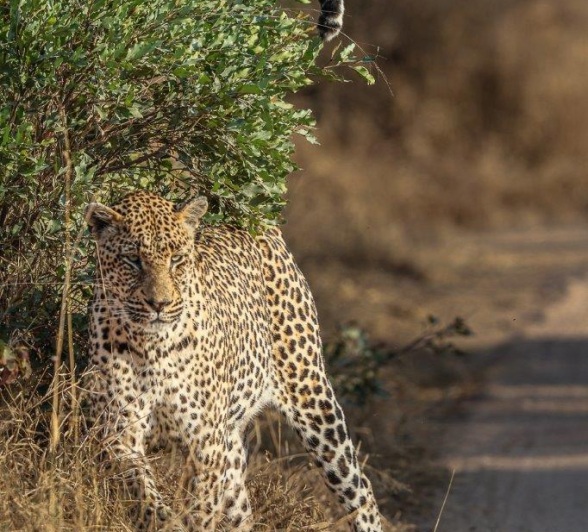

On our way back to Earth Lodge we found the Golonyi female as she was still actively hunting with her focus on a nearby impala herd. With temperatures already very high this early in the morning she was unsuccessful and decided to carry on into the thickets where she will spend her day in cover before continuing her hunt again as soon as the light fades and temperatures start dropping.


In the cooling hours of late afternoon, leopard tracks from the morning drive sat firmly in our minds. As we searched the ground for the last tracks of the morning a sharp bellow pierced the air. We immediately headed towards the alarms calls of a nearby bushbuck, a sure-fire sign of a nearby predator. True as could be, melted among the golden grass emerged the Nottins male leopard. The rarely seen nomadic male strolled casually searching grasslands and termite mounds for his next potential meal.


We were lucky enough to find the remains of a warthog carcass high up in a tree before we spotted not only one, but three leopards in the area. The N’weti male was busy feeding in the presence of the Ntsumi female and one of her daughters. It is unclear who made the kill but with male leopards often stealing kills from females, our theory is that Ntsumi made the kill, bringing her youngsters to it when N’weti heard the commotion and decided to investigate. N’weti already finished most of it with one of his daughters sitting below watching him feast. At this age they all still recognise each other but this is just temporary, as eventually they will all split up from one another again, carrying on with their own business.


During our morning safari, our focus was on leopard sightings. We were pleasantly surprised when we spotted the Ntsumi female roaming the eastern section of our reserve, actively searching for potential prey. With the early morning temperatures rising compared to the winter months, leopards are becoming less active during the day and prefer to find shady areas to rest, being more active at nighttime.



We were spoiled by finding four individuals from the Styx Pride - three females and one young male. With fresh suckle marks visible on two of the females, they were very aggressive towards the young male. This young male is reaching the age in his life where he must start moving away from his original pride in search for a different area that he can one day call home. It will be very difficult for him to survive by himself and thus will be looking for other males in his age range to move with, giving him the best opportunity to reach his full potential. Only time will tell what will happen to this pride and how their dynamics will change over the next few years.


While driving through the southern section of our reserve, we had an unexpected and exciting encounter. We heard lions roaring and later found tracks of two male lions leaving our reserve. Just when we thought we had missed our chance to see them, we heard more roaring, this time much closer. We followed the sound and came across a Gijima male, hot on the trails of two rival males who had entered their territory. The Gijima male seemed focused on pushing out the intruders to protect his females and cubs.
Continuing our safari, we were pleasantly surprised to spot the Southern Pride running deeper into our reserve, possibly in response to the unfamiliar male lions' roars. We followed them as they moved further away, occasionally looking back to ensure they were not being followed.
The ever-changing dynamics of lion behaviour makes it unclear what will unfold. Will the Gijima males be able to defend their territory and keep their kingdom safe?




Returning to the elephant carcass we were greeted by a horrible smell of the meat that has been lying in the sun for about seven days now. The lions are still busy feasting and with the Gijima males both present, they have finished much of the carcass. This pride is slowly moving further away from the carcass, which will allow hyenas and vultures to swoop in and take their share.
It is clear that the Gijimas were successful in securing their territory and keeping their females and cubs safe, otherwise they would not have been at the carcass feeding, they would have still been making their presence known, pushing the rival males out.

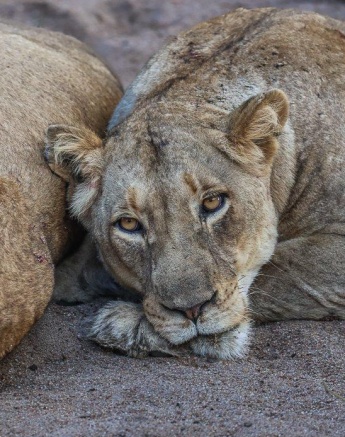



We found the Southern Pride not too far from where we left them in the morning. They were resting on a small rocky outcrop overlooking their surroundings. It was clear from their behaviour that they were still nervous because of the unwanted male lions that were in their territory recently. After resting for a while, they moved on towards a small waterhole to quench their thirst before continuing their journey in the evening.
Lion prides with cubs are usually very cautious about where they take their cubs, especially when there is unknown lion activity in or around their territory. No pride wants to lead their young ones towards danger and risk having them killed. The Southern Pride has done a great job of keeping their pride numbers high so far, and hopefully they will continue to thrive as one of the most famous prides in the region.
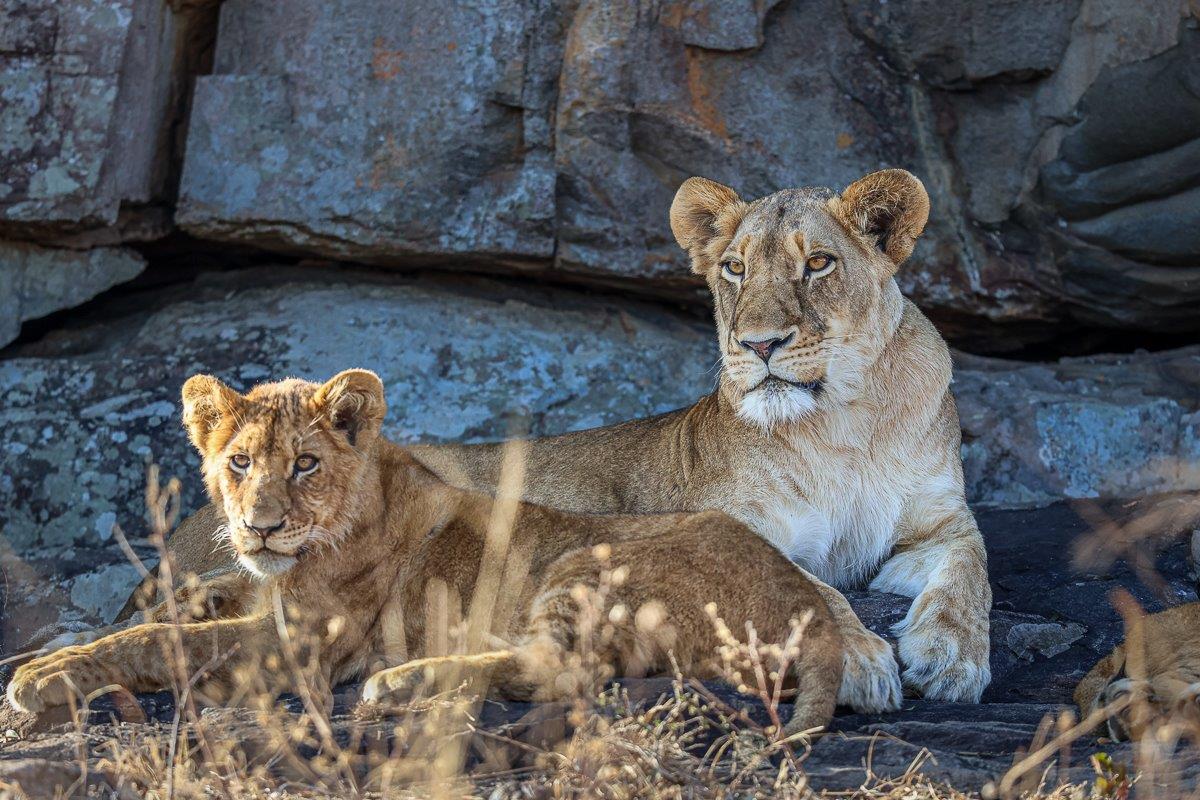
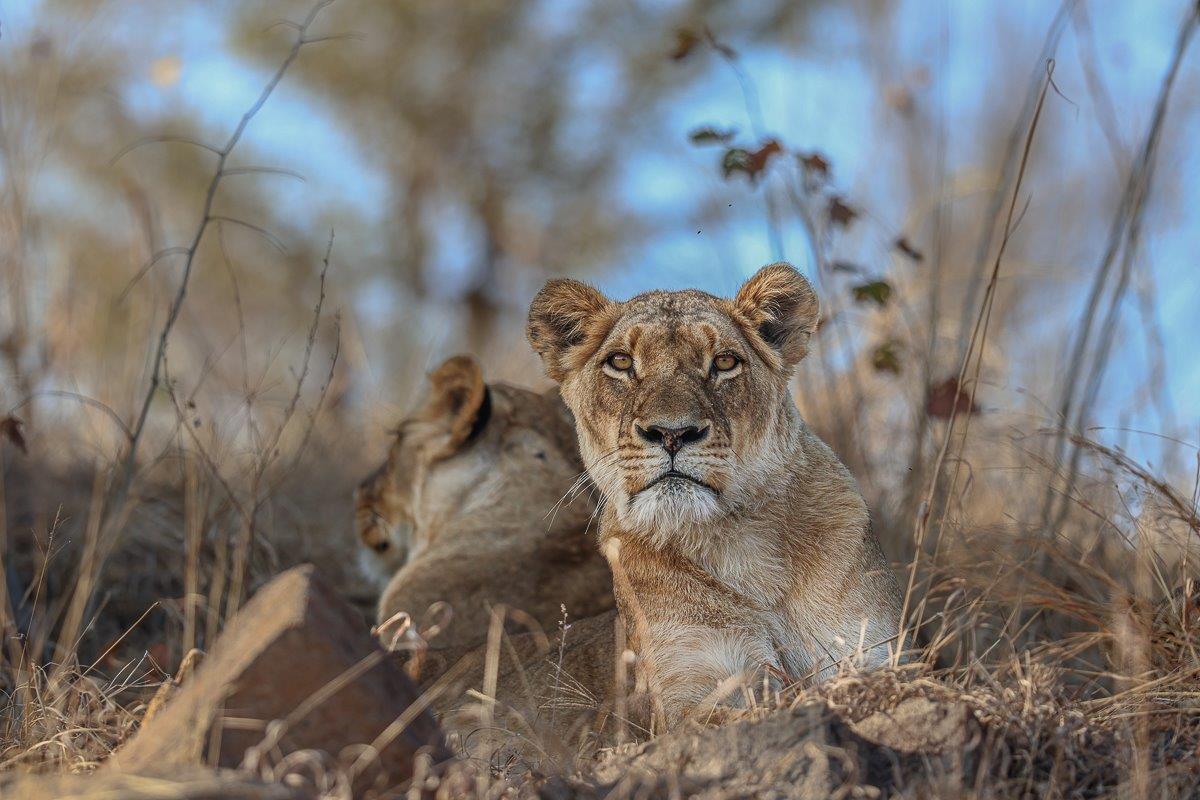
Visiting a hyena den on our reserve is almost a guarantee for action and curiosity. As we approached, this youngster was very inquisitive about our presence, coming closer for inspection. The adults were still present, hence the youngsters being out and about. As soon as the adults move off, the youngsters will retreat to the den, hiding in their burrows until the adults return.

As spring approaches, daytime temperatures are rising significantly. With higher temperatures, animals need to drink more water to stay hydrated and keep their digestive systems in good condition. Most wild animals are likely to drink water up to twice a day: early in the morning when conditions are still favourable and late in the afternoon when temperatures start dropping again.


This Dwarf mongoose was one of many that caught our eye as we drove past a termite mound. The whole pack was busy basking in the early morning sun to warm up. They would soon start moving away, looking for food during the daytime before returning to the safety of their burrows before sunset.
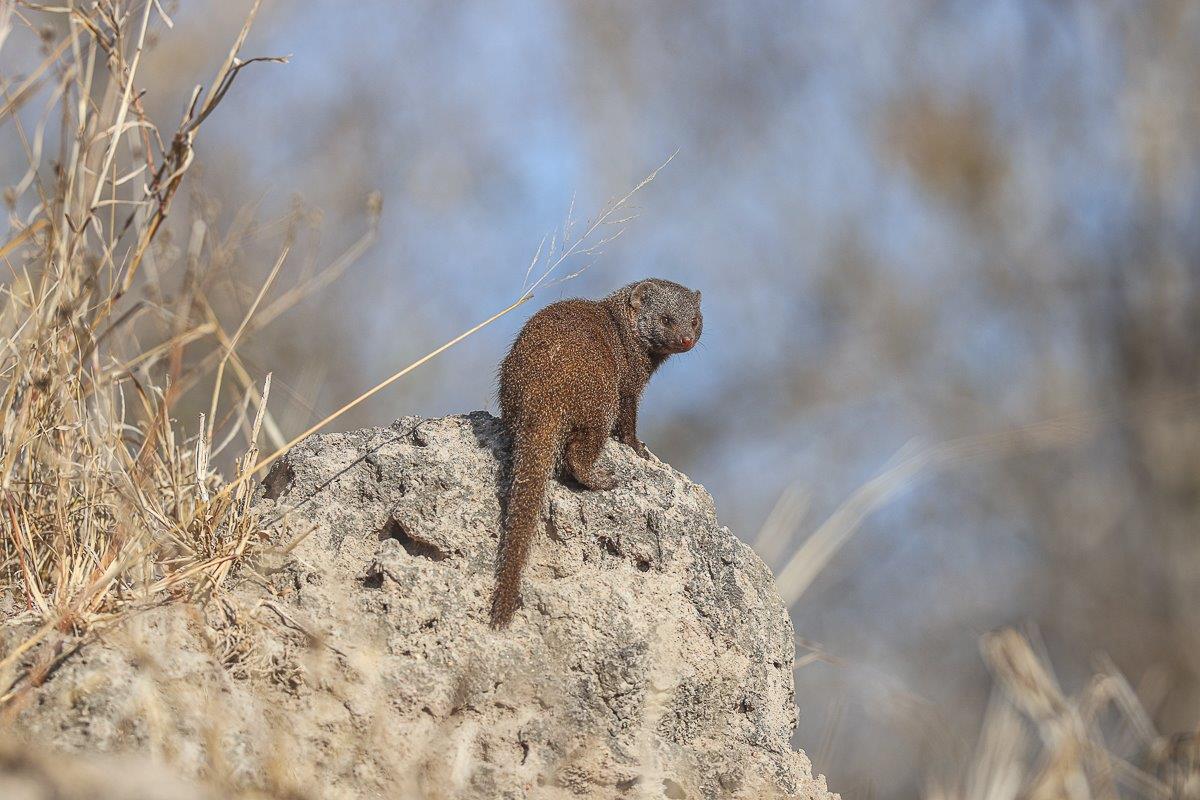
It's captivating to watch the fascinating behaviour of Oxpeckers, especially when they are amidst a large herd of buffalo. These birds flit from one buffalo to another, meticulously picking off ticks and other parasites from the buffalo's skin. As they move around, they also clean their beaks by rubbing them on the rough surfaces of the buffalo's back.

We were privileged to witness a kill as we watched this Little sparrowhawk taking down a Black-crowned tchagra, seeing how the sparrowhawk used its feet to strangle the tchagra and started to pull the feathers out to get to its well-deserved meal. The tchagra was trying its best to escape the claws of the sparrowhawk, but with no luck. The Little sparrowhawk is a fast-flying predator bird that usually comes flying through the tree canopies for cover before moving in for the kill. Roughly 98% of their diet consist of small birds up to the size of a dove. It really is survival of the fittest out here.



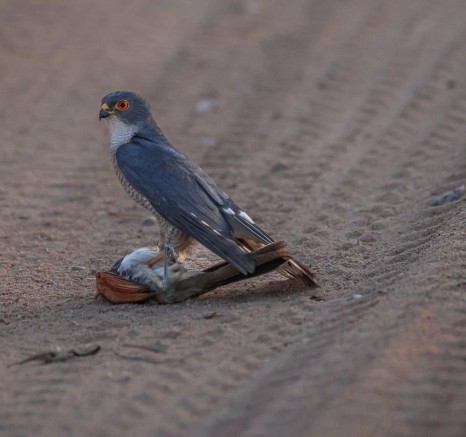
We recently found a new den site for hyenas in the southern part of our reserve. When we arrived, three of the younger hyenas approached us out of curiosity. They lost interest in us and started playing, biting each other and leaping around. This playful behaviour helps the young hyenas learn about hunting and capturing prey, understanding where to bite and how to bring down animals for a successful meal. Despite being known as scavengers, hyenas also hunt for themselves, especially when they are part of larger clans like this one.



The African barred owlet usually hides in thick vegetation, but as we are getting to the end of our winter months, most trees have lost all their leaves and there are fewer places to hide. We spotted this African barred owlet doing its best to blend in with its surroundings by sitting low in a tree carefully watching the ground for any movement. Despite primarily hunting at night, these owlets will seize opportunities during the day in favourable conditions.

This bull elephant was using the road to walk with ease, covering a greater distance without the difficulty of walking through thick vegetation. Elephants cover a lot of distance throughout daytime, spending most of their time feeding on the move, moving from waterhole to waterhole.

Until next time…

Blog by Wendy Claase
Images by Benjamin Loon, Devon Jansen, Ronald Mutero and Ruan Mey







